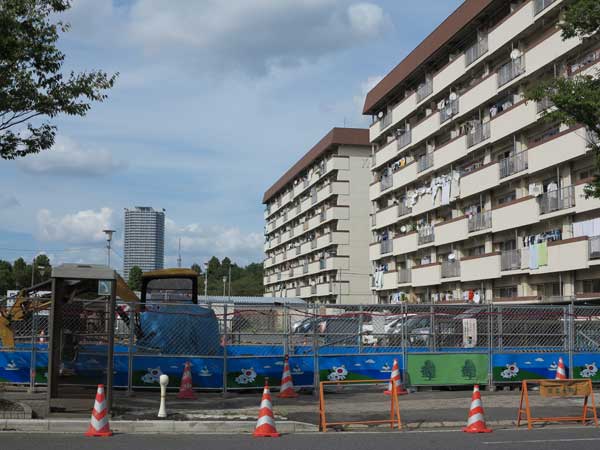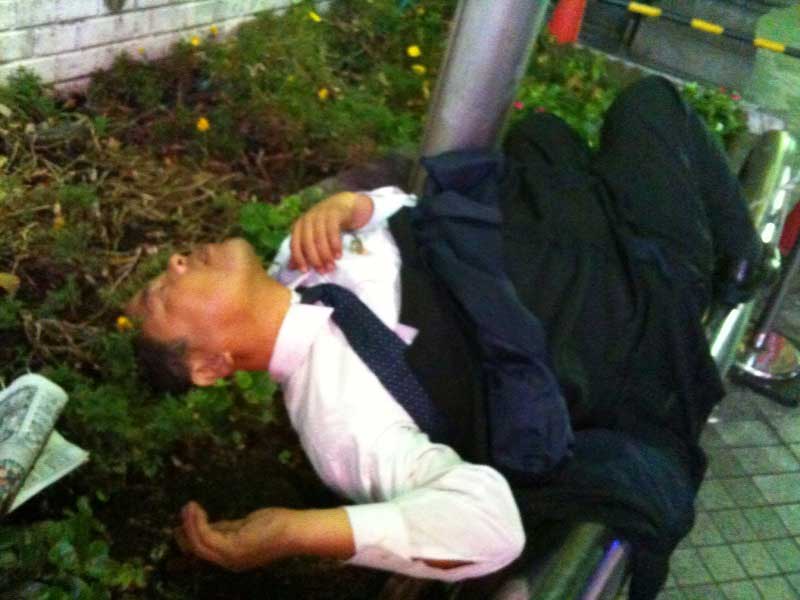
The Huffington Post published the English version of my recent Newsweek Japan article. Entitled “Gardening for Strangers in Tokyo,” it argues that the smallest gardens connect city people with nature, culture and history. Written in a personal voice to show a foreigner’s view to a largely Japanese audience, the article emphasizes how “Tokyo’s distinctive streetscape encourages proximity with many small gardens and their gardeners,” creating human as well as environmental benefit.
Gardening for Strangers in Tokyo
(This article originally appeared in Newsweek Japan on January 12, 2009 in Japanese)
Spending several weeks in Tokyo on a business trip in 2008, I was startled and enchanted to discover its human scale and its streets alive with people and plants. Like many foreigners, I assumed Tokyo would be all cold high-rises, crowded Shibuya scrambles, and flashing neon advertising. In short, I imagined the world’s largest metropolis entirely removed from the natural world.
I brought to Tokyo a lifelong interest in gardening. What surprises me still are Tokyo residents’ ingenuity and passion for cultivating plants and community in a crowded, over-built city. On leaving a beginner’s ceramics class in a humble Tokyo neighborhood one day, I came across four perfect pansies growing in the crack of a narrow sidewalk.

This image of Tokyo as a gardeners’ city motivated me to relocate from San Francisco to research and write about Tokyo Green Space. Placing my research in the context of design anthropology and urban ecology, I was extremely fortunate to receive generous support in 2009 from Hitachi, which is committed to a Japanese approach to environmental protection and to cultural diplomacy.
The sidewalk pansies show that Tokyo is organized differently than United States and European cities, and that many of these differences are nearly invisible to Japanese people. I formulated several guiding questions. Why do Tokyo residents care so deeply about their surroundings? What role can nature play in dense urban environments? What can other cities learn from Tokyo’s urban gardening culture?
I began collecting images of gardens visible from streets and sidewalks. Surprises included a valuable bonsai collection growing on a private residence’s cinder block wall; rice maturing in styrofoam containers; a single, exquisite mini-watermelon supported by a wooden stand in a Ginza backstreet. Sadly, in San Francisco and most developed world cities, these potted plants would be quickly stolen or vandalized. Meanwhile few Tokyo residents connect the respect shown to public plants with their unequaled personal safety in streets and transit.

Rushing into a men’s room in the Tokyo Metro, I glimpsed ivy growing in a two-liter plastic bottle lying on its side. In the twenty-first century, United States cities permanently closed their subway restrooms for “public safety.” Here in Tokyo I could calmly imagine the anonymous person who beautified an underground utility with a living organism and minimal resources. Did he return regularly to change the water? What inspired his passion for plants and his kindness to strangers?

Across the four seasons, I observed Tokyo residents celebrating nature together in public places. For hanami (cherry blossom viewing), it is common to see people sleeping overnight in parks and along rivers to reserve spaces for blue sheets and the next day’s outdoor party for family, co-workers, or friends. The pink cherry blossoms transform the entire city as boisterous crowds share drinks and food. In fall, many thousands view ginko trees turning bright yellow in Aoyama, and special evening “light up” displays of red maple trees in traditional Japanese public gardens.
Continue reading →













